In the summer, you’ll find me sitting in the shade sipping a cool glass of hibiscus tea. Packed full of vitamin C and antioxidants, hibiscus helps to support my system and keep me healthy when my body is at full speed out in the garden. Learn the powerful benefits of the hibiscus plant and why you might want to add hibiscus tea to your daily routine.
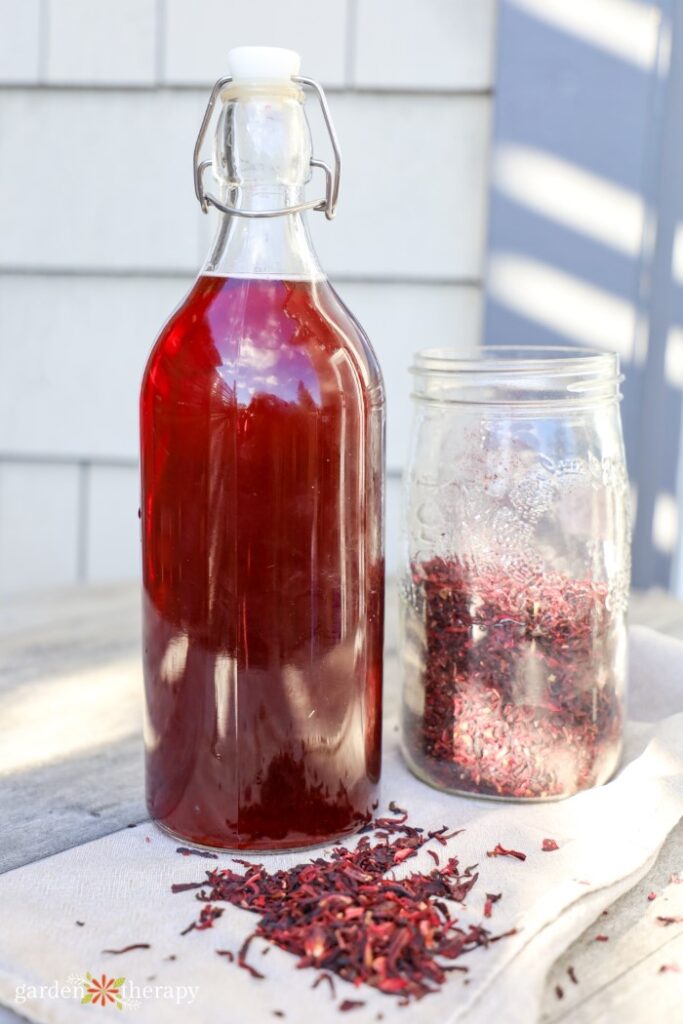
Most know the hibiscus plant for her beauty, but fewer know her for the amazing medicinal benefits that the plant produces.
If you’re picturing a hibiscus flower you might find on a Hawaiian shirt, turn that thinking around. Today, I’ll be focusing on the Hibiscus sabdariffa, most popularly known by its common name, roselle. While there are many uses for those in the hibiscus family, the roselle is the most commonly used hibiscus plant for herbal medicine.
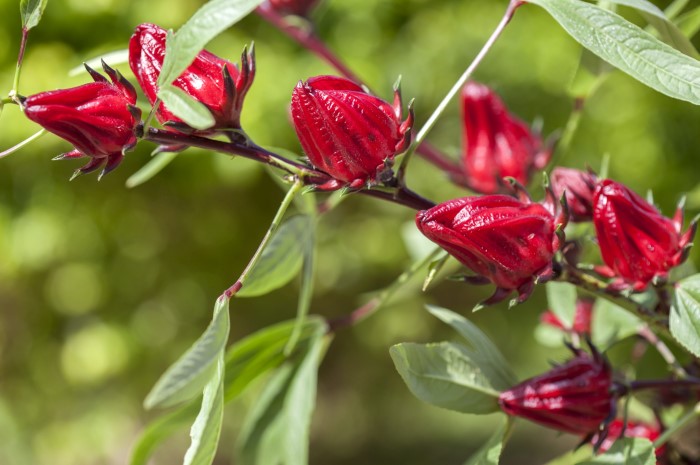
The roselle has large yellow flowers with a red and purple center. The calyx, known as the outermost part of the flower, becomes fleshy and fruit-like once the flower finishes blooming. The calyx is where all the herbal action is at!
If you’re looking to learn more about how to grow this wonderful plant or about any of the other types of hibiscus flowers such as the rose of sharon, check out my hibiscus growing guide instead.
This post will cover…
- History of the Hibiscus Plant
- Hibiscus Benefits
- How to Use the Hibiscus Plant
- Frequently Asked Questions About Hibiscus Plants
- More Herbal Guides
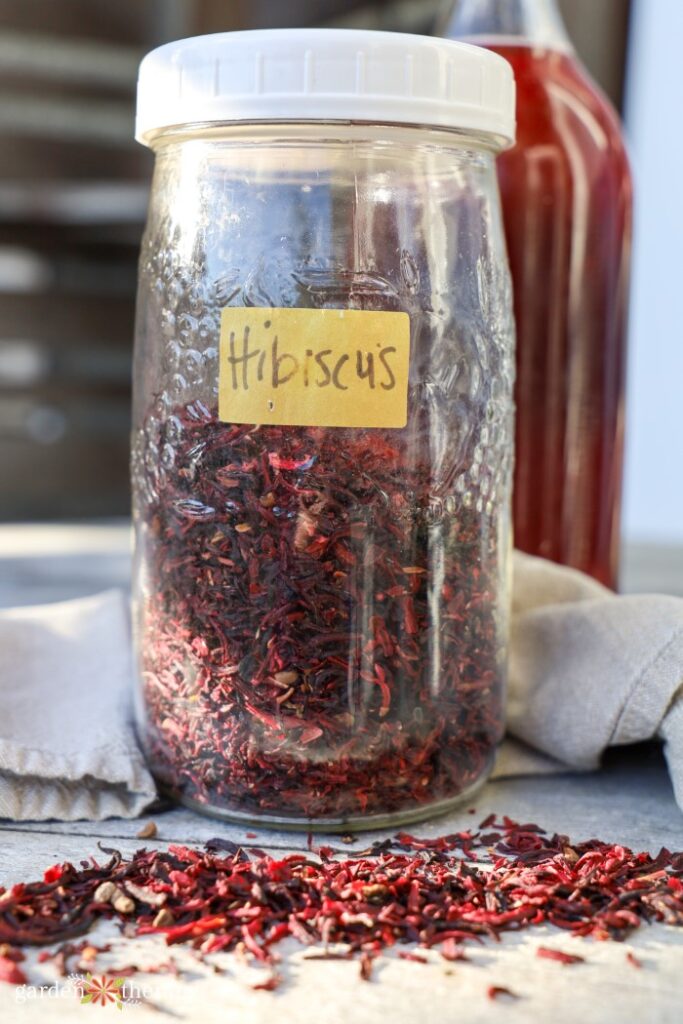
History of the Hibiscus Plant
The hibiscus plant is a herbaceous shrub in the mallow family. Originally native to north Africa and southeast Asia, you can now find it throughout many tropical and subtropical regions. Some may even grow hibiscus as an annual!
Perhaps the most well-known use for the plant is hibiscus tea. In the Caribbean, they call hibiscus tea sorrel, Latin America knows it as agua de Jamaica, North Africa, Italy, and Russia call it karkade, Iran knows it as sour tea, and India calls it arhul ka phool. You can say it’s a fan favourite across the globe!
To make the hibiscus tea, they would harvest the plant’s calyces and use them to cool the body. Egypt used hibiscus as a diuretic as well as to help with nerve and cardiac diseases. In North Africa, they used the plant to help with sore throats and coughs.
Throughout Europe, the hibiscus plant would help congestion in the upper respiratory tract and assist with colds. It even helped with sleeplessness and worked as a laxative.
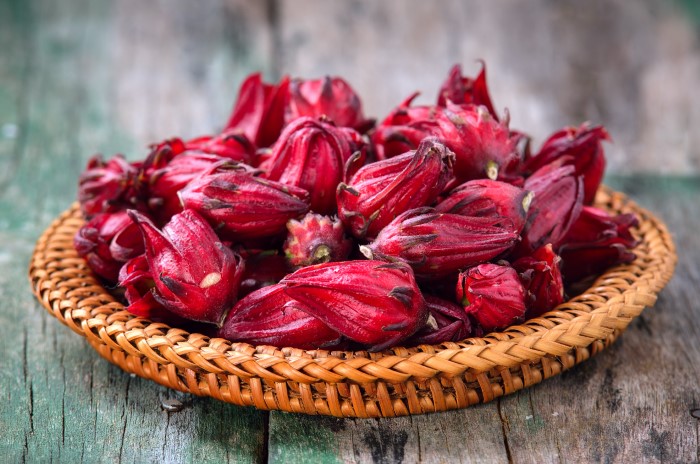
Hibiscus Benefits
The hibiscus flower hosts many benefits. In Traditional Chinese Medicine, they primarily use the Hibiscus rosa-sinensis. It has similar medicinal uses to the Hibiscus sabdariffa, the main herbal flower grown today and what I’m talking about!
On the outer side of the flower, there are dark red sepals known as calyces that emerge after the flower blooms. These get harvested and then are used fresh or dry for teas, tinctures, syrups, honey, and jams. It has a slightly sour and astringent taste to it.
Hibiscus is high in Vitamin C and antioxidants which can help to strengthen the immune system and fight colds and infections.

One of the main uses of the flower is to cool the body. The cooling nature of the herb helps to cool and regulate body temperatures as well as cool mucus membranes for digestion as well as the reproductive and urinary systems.
Used for clearing, it helps to move stuck mucus and energy in the lungs, digestive system, circulatory system, and reproductive system.
Hibiscus also supports healthy blood pressure, cholesterol levels, prevent UTIs, and balance hormones. Not only is she a beauty, but the hibiscus is a powerful healing tool!

How to Use the Hibiscus Plant
To use Hibiscus sabdariffa, harvest when the flowers have finished blooming and the petals have fallen off. You want to harvest the calyces (a pointy red pod) when they are thick and fleshy.
Hibiscus tea is one of the most popular and traditional ways of enjoying the herbal benefits of hibiscus. Oftentimes, you sweeten and pair it with spices and other herbs such as cinnamon, nutmeg, clove, ginger, lemon, mint, and rose.
Enjoy it hot or as iced hibiscus tea (this is my summer go-to. Even my kiddo loves it!)
Besides making tea, you can also infuse vinegar, make a tincture, a syrup, or make infused honey. I use it medicinally in my manuka honey lozenges, paired with rosehips. It’s also a fun addition to butterfly pea flower drinks as it changes the drink from bright blue to crimson red!
Frequently Asked Questions About Hibiscus Plants
Generally speaking, the hibiscus family fits the description of a shrub. There are many varieties of hibiscus, however, so each one could be slightly different. The Hibiscus sabdariffa is considered a perennial herb or a woody-based subshrub. It has plenty of medicinal and herbal properties.
All parts of the Hibiscus sabdarariffa are considered edible. This means you can eat the leaves, flowers, and calyces. Typically, the calyces are what are enjoyed the most and what you make hibiscus tea out of. However, the leaves also have a distinct flavour and can be used for tea as well.
Hibiscus tea is considered high in vitamin C, electrolytes, antioxidants, and a range of minerals. It also has anti-microbial and anti-inflammatory properties. It can help with body temperature regulation and inflammation, boost the immune systems, assist with cardiovascular health, the urinary systems, and the reproductive system.
Be sure to check out my hibiscus tea post for more detailed information on hibiscus tea benefits.
I combine my hibiscus with rosehips for extra acidic flavour and to enjoy added health benefits. You can enjoy hibiscus tea fresh or dried. If using dried, grind the spices beforehand with a coffee grinder or food processor before steeping.
You can also find some prepackaged teabags. While you can drink it as a hot tea, I personally enjoy the drink cool as hibiscus iced tea.
The Hibiscus sabdarariffa is a very safe plant to consume. The recommended dose for the tea is 2 tsp of hibiscus calyces per cup up to three times a day.
The only times you may want to exert caution is if you are taking extremely high doses of the extract. This can harm the liver. Avoid hibiscus if pregnant as it can stimulate menstruation.
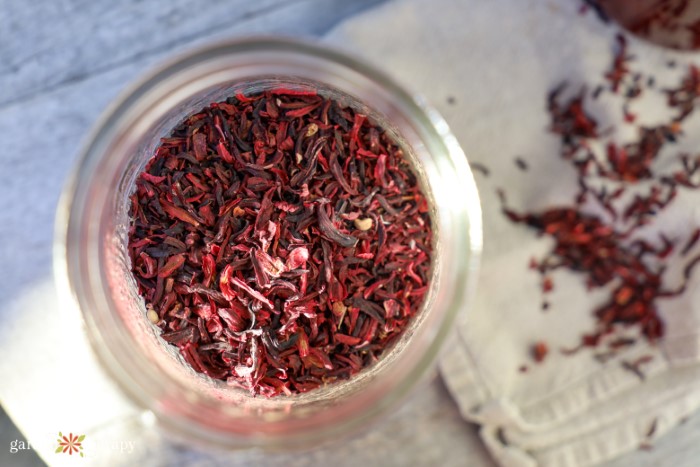
Let me know how you use the hibiscus plant in your herbal routine in the comments down below!


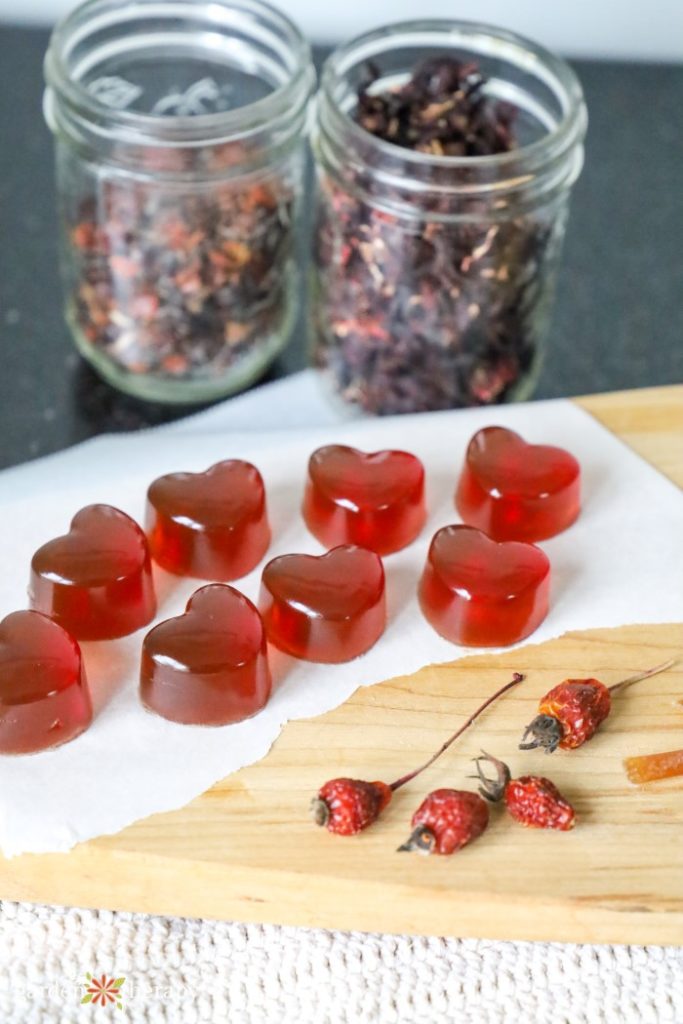
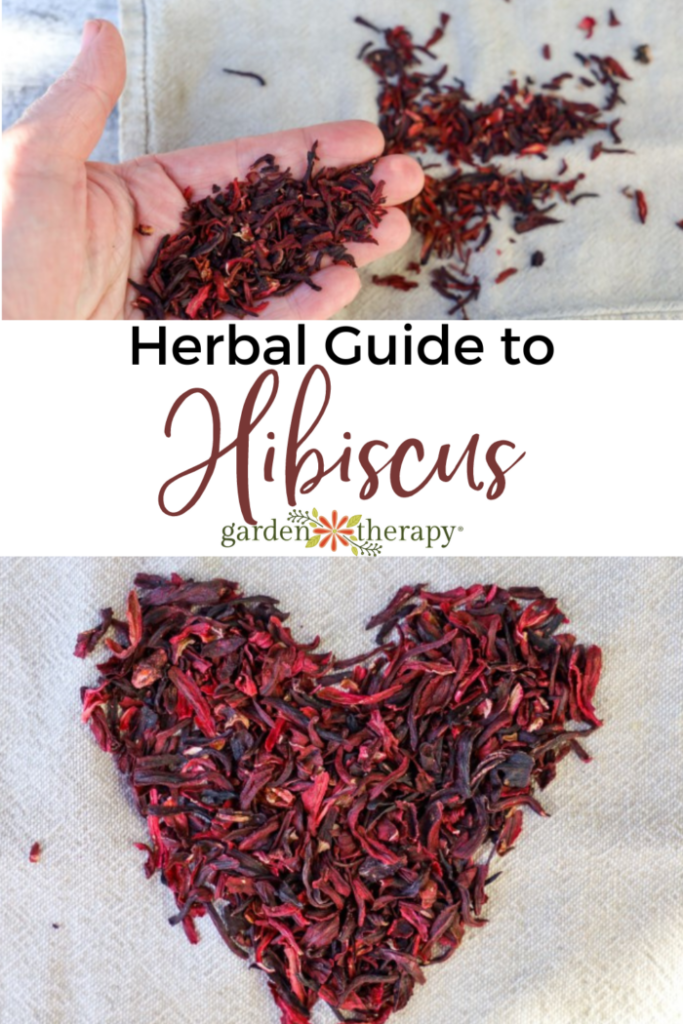



Question: is this hibiscus tea safe for post-menopausal women who still have a uterus and ovaries and are using natural plant-based HRT? I assume it must stimulate hormones, but maybe very subtly? I am interested in growing this plant and using it an iced tea in the summer. Thanks for the article.